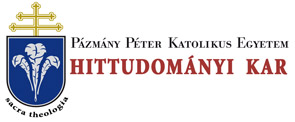Folia Theologica et Canonica, Supplementum (2016)
Szabolcs Anzelm Szijromi, O.Praem., Relationship among the Holy See, Czech-, Polish-and Hungarian Kingdoms in the 13"'-14" century
204 SZABOLCS ANZELM SZUROMI intended again to recapture the City of Jerusalem and occupy the rest of the Holy Land. Without get in deep analysis of this so complicated situation in the Middle East or summarizing the conclusions of the formal military actions of the crusaders, we would like only to take a glance on that very cmsade which was basically organized by Pope Innocent III (1198-1216) and Honorius III (1216-1227), and involved the Hungarian King Andrew II, Leopold VI (Austria), and William I (Holland).27 When the Hungarian King Adalbert III died in 1196, his son, Andrew (later Andrew II: 1205-1235) had made an oath to fulfill his father's offer of leading a crusade to the East. It was based on an extraordinary privilege which gave Papal permission - by Pope Celestin III (1191-1198) - to Adalbert’s son to fulfill his father’ promise.28 This privilege letter offered peace over Hungary if Andrew completes his holy action. After several political and military acts which influenced the Hungarian domestic legal situation, including the debate on the recognized king and his authority. Andrew’s will - approved by the pope - was promulgated on the day of exaltation of the Cross (September 14,h). King Andrew II carefully followed the intention of Pope Innocent III and his representatives who arrived to Hungary, in particularly against those who tried to misuse this military opportunity. In this work the archbishops and other prelates of the Church gave indispensable help to Andrew II.29 * Pope Honorius III on 11 February 1217 indicated in his letter that Hungary could get every protection because King Andrew II had assumed the sign of the Cross in order to fulfill his mission in the Vlh Crusade.’" King Andrew II gave several significant donations to military and hospital orders or fortresses on the occasion of his crusade, including the Teutonic Nights31, Hospital Order of Margat32, Fortress of Margat33. The second - within Europe the most - important field of the contemporary international military and political situation was the Mongolian invasion. 27 In detailed see Powell, J. M., Anatomy of a Crusade, 1213-1221, Philadelphia 1986. “ Kristó, Gy., II. András, in Kristó, Gy. (ed.), Korai Magyar Történeti Lexikon (9-14. század), Budapest 1994. 43. 29 Classical detailed historical analysis: Hurter, F., Hisoire du pape Innocent III et de ses contem- porains (trad, de Saint-Chéron, A. - Haiber, J-P.), I. Paris 1838. 182-184. Artner, E„ „Magyarország mint a nyugati kereszténység védőbástyája” (ed. SzovÁK, K. - Török, J. - Tusor, P.) [Collectanea Vaticana Hungáriáé I], Budapest 2004.9; cf. Potthast, A. (ed.), Regesta Pontificum Romanorum inde ab a. post Christum natum MCXCVlll ad a. MCCCIV, I—II. Berlin 1875. (repr. Graz 1957; hereafter: Potthast) 480 (n. 5456). 31 Artner, E., „Magyarország mint a nyugati kereszténység védőbástyája", 13; cf. Potthast 506 (5756). Artner, E., „Magyarország mint a nyugati kereszténység védőbástyája", 22; cf. Potthast 598 (6903). 32 Artner, E., „Magyarország mint a nyugati kereszténység védőbástyája ”, 14; cf. Potthast 513 (5849). 33 Artner, E., „Magyarország mint a nyugati kereszténység védőbástyája”, 15; cf. Potthast 514 (5849). About the Crusader Castle of Margat, cf. Major, B., Medieval Rural Settlements in the Syrian Coastal Region ( 12"' and 13"' Centuries) [Archaeolingua Central European Archaeological Heritage Series 9], Oxford 2016.
